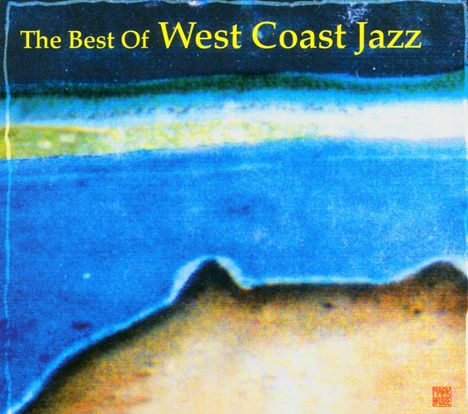The Best Of West Coast - Jazz Reference auf CD
The Best Of West Coast - Jazz Reference
Herkömmliche CD, die mit allen CD-Playern und Computerlaufwerken, aber auch mit den meisten SACD- oder Multiplayern abspielbar ist.
(soweit verfügbar beim Lieferanten)
- Label:
- Dreyfus
- Aufnahmejahr ca.:
- 1951-1953
- Artikelnummer:
- 4312611
- UPC/EAN:
- 3460503677722
- Erscheinungstermin:
- 12.10.2004
Similarly to most styles and movements standing out in the history of jazz, that known as ‘West Coast Jazz’ cannot be precisely defined or labelled. And yet it truly did exist, this Californian jazz which shone for some fifteen years, starting in the early fifties. The propitious material conditions, one being the abundance of work offered to competent artists by the Hollywood studios, attracted a great number of musicians towards the Californian sunshine. Many of them came from New York or large cities in the East: Gerry Mulligan, born in New York, arrived in Los Angeles in 1952, the Chicago born altist Lee Konitz, was hired by Stan Kenton in the same year, drummer Shelly Manne from New York, Shorty Rogers, born near Boston, brought up in the Big Apple, trombonist Frank Rosolino from Detroit, saxists Bob Cooper from Pittsburgh and Bud Shank from Dayton – all these artists left for Los Angeles to work more and enjoy a certain material and climatic comfort. The first two arrived with Miles Davis’ precious teachings, having belonged to the nonet he had managed to get recorded in New York by a Californian company. The group’s credo was the aesthetic choice of tempered, smooth music, played without vibrato, using sagaciously harmonic arrangements, mainly written by Gerry Mulligan. The principal soloist, excepting Miles, was Lee Konitz, whose sonority and concepts marked the playing of his fellow saxists on the Coast. It is quite clear all the orchestral pieces in our selection owe their fluidity, lightness and charm to the lessons learnt from the famous nonet, starting with the compositions of Mulligan himself (Westwood Walk), continuing with those by Shorty Rogers, Bill Russo (the superb Sweets), Jack Montrose (A Dandy Line) and the arrangements by Marty Paich and Jimmy Giuffre.
The musicians who arrived from elsewhere, and the list here is far from complete – we can also add Stan Getz, born in Philadelphia and who settled in California in 1947, and Bob Brookmeyer from Kansas City – found no trouble in mixing with the native colony on the West Coast – pianist Hampton Hawes, trumpeter Chet Baker, altist Art Pepper and the emblematic figure of regional jazz, pianist Dave Brubeck, born in Concord, a pupil of Darius Milhaud in Oakland, near San Francisco, the birthplace of Paul Desmond with whom in 1951 he founded a quartet which was soon to be internationally celebrated. Desmond’s alto, as those of Konitz, Art Pepper, Herb Geller and Bud Shank had learnt from Lester Young as regards the culture of a timbre-free sound and expression leaning towards relaxation, the dominant characteristics of Californian tenors of the period, from Getz and Zoot Sims to Bob Cooper, Richie Kamuca and Bill Perkins, almost all from the big bands school of Woody Herman and Stan Kenton, all direct disciples of Lester. Incidentally and paradoxically, the first true bebop tenors, Dexter Gordon, Wardell Gray and Teddy Edwards matured their style under the influence of Charlie Parker in California at the end of the forties, but didn’t participate in the ‘West Coast’ movement of the fifties and sixties excepting Teddy, one of the rare Afro-Americans of the crowd.
The saxophonists’ allegiance to Lester Young and the importance given to the arrangements, perfectly performed by seasoned artists in the large Hollywood studios, seem to be the only converging points of the musicians who partook in this adventure. The trumpeters and trombonists in the West were also quite different from each other, as were their counterparts in the East – Candoli answered to Gillespie, Chet Baker to Miles, Frank Rosolino to J. J. Johnson. Whereas the pianists were in general firm followers of Bud Powell, pure beboppers, as proved here by Hampton Hawes, Russ Freeman and John Williams. Finally we come to the drummers, the excellent charmer of rhythms and colours, Shelly Manne stood out as being indispensable to others, Hawes, Rogers, Rumsey and also at the head of his own set-ups, a liegeman of a movement which, taking everything into consideration, gave swing its rightful place in order for jazz to be jazz, an artform which satisfies both the body and mind. In this disc we discover the teething stages of this adventure, promising countless moments of pleasure and whetting our appetite for the rest of the story.
Rezensionen
"Hier finden sich die Größten des Stils, und sie zeigen, welch seelenvolle, swingende Musik in den 50ern an der Westküste gespielt wurde. Was die CD aus der Vielfalt anderer erhältlichen Aufnahmen heraushebt, ist die Brillanz ihrer Klangrestaurierung. Deutlicher als bisher sind die Qualitäten der Musik herausgearbeitet. Schätze von 1951-1953 im neuen Glanz." (Stereo)
Disk 1 von 1 (CD)
-
1 Shorty Rogers: Bunny
-
2 Hampton Hawes: Thou swell
-
3 Shorty Rogers: Popo
-
4 Too Marvellous For Words
-
5 Art Pepper: Everything Happens To Me
-
6 Shelly Manne: You're My Thrill
-
7 Shorty Rogers: Morpo
-
8 Shelly Manne: You And The Night And The Music
-
9 Stan Getz: Crazy rhythm
-
10 Gerry Mulligan: My Funny Valentine
-
11 Stan Kenton: Crazy Rhythm
-
12 Gerry Mulligan: Westwood walk
-
13 Hampton Hawes: It's you or no one
-
14 Art Pepper: These Foolish Things
-
15 Chet Baker: A dandy line
-
16 Art Pepper: Tickle Toe
-
17 Shelly Manne: Afrodesia
-
18 Dave Brubeck: Lulu's back in town
-
19 Howard Rumsey: Mambo los feliz
-
20 Shelly Manne: Sweets
-
21 Stan Kenton: Portrait Of A Count
-
22 Stan Kenton: Fascinating Rhythm




